Driving the Legend: Review of the Original 1963 Porsche 911
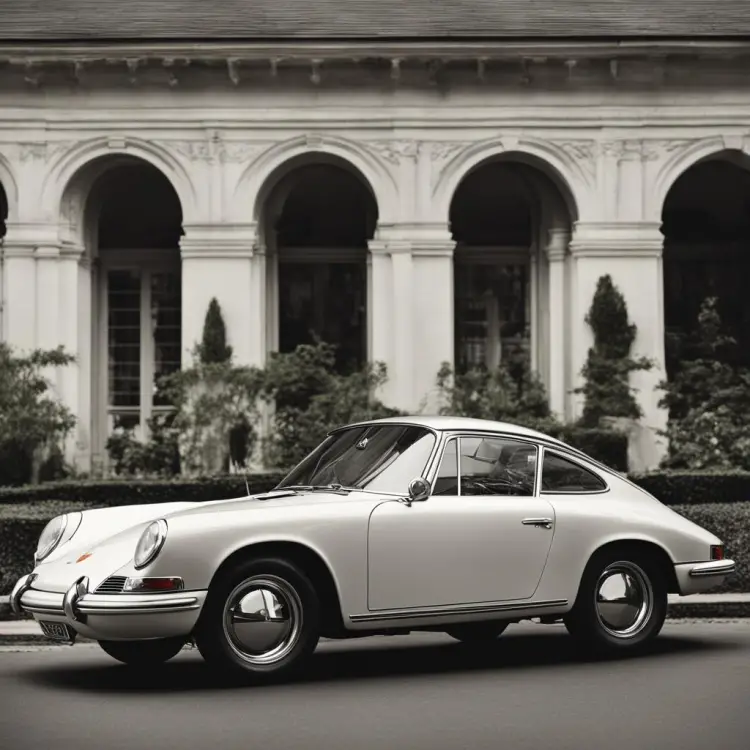
Driving the Legend: Review of the Original 1963 Porsche 911
Have you ever dreamed of owning an iconic sports car from the golden age of automobiles? If so, the original Porsche 911 should be at the top of your list. You’re in for a raw, visceral driving experience that connects you to the road like few modern vehicles can. Introduced in 1963, the 911 defined the Porsche brand and became a legend. Now, over 50 years later, the original 911 still turns heads and quickens pulses.
Sliding into the leather bucket seat, gripping the thin steering wheel, and firing up the air-cooled flat-six engine transports you back to a simpler time. A time before technology and computer-controlled everything. Just you, the mechanical symphony behind your ears, the vibration through the floorboards, and a winding road ahead. The communicative steering and lively rear-engine handling let you feel what the car is doing, providing a sense of control and oneness between human and machine that’s utterly addictive.
Driving a vintage 911 isn’t for everyone. It requires patience, dedication, and an appreciation for the experience that comes from a vehicle with character in spades. But for those who “get it”, the original Porsche 911 offers a direct connection to the soul of motoring that’s impossible to replicate in modern cars. It’s analog driving at its finest.
Introducing the Original Porsche 911 (1963-1973)
If you’re interested in owning a piece of automotive history, look no further than the original Porsche 911. Produced from 1963 to 1973, this iconic model defined the Porsche brand and revolutionized sports car design.
Speed and Power
The original 911 housed a powerful air-cooled 6-cylinder boxer engine in the rear that delivered 130 to 190 horsepower, propelling you from 0 to 60 mph in around 7 seconds. This rear-engine, rear-wheel drive setup provided lightning-quick acceleration and razor-sharp handling that made the 911 a thrill to drive.
### Timeless Styling
With its sloping roofline, round headlights, and minimal body panels, the 911’s design was simple yet striking. Porsche made minor styling tweaks over the years but remained largely unchanged, cementing its status as an automotive icon. The interior was no-frills but focused on the driving experience with its five-gage instrument cluster and close-ratio manual transmission.
An Investment That Holds Value
Owning an original 911 means enjoying a slice of sports car history that has enduring appeal. Well-maintained models have seen strong price appreciation over time. Though prices vary depending on condition and specific model year, you can expect to pay $90,000 to $250,000 or more for an early longhood 911 in good working order.
If you want a pure, unadulterated driving experience in one of the most iconic sports cars ever made, the original Porsche 911 deserves a spot in your garage. This automotive legend revolutionized sports car design and still thrills enthusiasts today with its timeless style and performance. What are you waiting for? Get behind the wheel of this piece of history.
Overview of the Different 911 Models From 1963-1973
If you’re lucky enough to own an original 911 from 1963 to 1973, you’ve got a real piece of Porsche history. These first generation “901” models came in several variants over the years that are all highly sought after today.
The original 911 coupe debuted in 1963 with the iconic flat-six boxer engine and timeless silhouette that still defines the 911 today. The Targa followed in 1967, giving you open-air freedom with a removable roof panel. ###2.1 The 911E and 911S (1966-1971)
These higher performance models featured more powerful engines, improved handling, and sportier styling. The 911E made 160 horsepower, while the 911S boosted that to 190 horses. Either one let you chase twisting mountain roads at speed.
2.2 The 911T (1967-1973)
If you preferred a bit more comfort and lower cost, the 911T fit the bill with its 110- or 125-horsepower engine. It provided 911 style and handling without the higher performance. The perfect classic cruiser.
From start to finish, these early 911s epitomized what a sports car could be – lightweight, air-cooled, and unbelievably fun to drive. Any of these first generation models would make a superb addition to your garage. The only question is: which 911 is calling your name?
Driving Dynamics and Performance of the Early 911
Driving an original 1963 Porsche 911 is an experience like no other. Once you slide into the leather bucket seat, grip the thin steering wheel and slot the iconic ignition key into place, you’ll instantly feel the racing heritage infused into this rear-engined legend.
Power and Acceleration
The early 911 packed a powerful punch from its air-cooled, horizontally opposed six-cylinder engine. Producing 130 horsepower, the 2.0-liter motor delivers swift acceleration and strong torque, allowing you to cruise comfortably or aggressively attack winding back roads. The four-speed manual transmission shifts crisply, giving you full control over the rear-wheel-drive powertrain. Floor the throttle and feel the surge of power as the tachometer sweeps past 4,000 RPM.
Handling and Cornering
With its compact wheelbase and nearly perfect 50/50 weight distribution, the 1963 911 is a handling dynamo. The suspension is firm yet pliant, absorbing bumps while keeping the tires glued to the road. The hydraulic power steering provides quick turn-in and direct feedback. Once you start carving up twisty sections of tarmac, you’ll understand why these early 911s earned a reputation for being giant slayers on race tracks and rally stages. The 911 encourages you to push its limits, as it feels balanced and planted even at high speeds.
Braking
The four-wheel disk brakes provide strong stopping power for such a lightweight vehicle. The brake pedal feels firm underfoot, allowing you to scrub off speed with confidence before entering a corner. The brakes are highly responsive but not grabby, giving you full control during aggressive driving.
Driving a first-generation Porsche 911 is a raw, visceral experience that connects you to the road. While lacking in creature comforts, its focus on performance and handling is utterly timeless. Slide behind the wheel of this rear-engine legend and you’ll instantly feel why it has achieved icon status. The early 911 represents driving in its purest form.
Engine and Transmission Options in the Original 911
The original Porsche 911 offered three engine options to suit different driving styles. All were air-cooled, horizontally opposed six-cylinder “boxer” engines mounted in the rear, which gave the 911 its distinctive design.
2.0-liter and 2.2-liter
The initial 1963 model came with a 2.0-liter engine producing 130 horsepower. Porsche increased displacement to 2.2 liters in 1966, bumping output to 140 hp. These smaller engines gave the early 911 peppy performance for the time but were underpowered by today’s standards. Still, their raspy, high-strung character is appealing to Porsche purists seeking an authentic driving experience.
2.4-liter
In 1969, Porsche introduced the “2.4 E” engine, which produced 150 hp. This gave the 911 more usable performance for daily driving while retaining its sports car feel. The 2.4 E engine was produced through 1973, the final year of the original 911 series. Many enthusiasts consider this powertrain to be the best blend of power and vintage 911 character.
Transmission
The only transmission offered was a 4-speed manual. The shift lever protruded from the dash, right next to the ignition switch—an unusual but charming design that reinforced the 911’s sporting intent. The transmission shifted with a firm, mechanical action that rewarded precise driving. There was no automatic option, as Porsche judged the 911’s mission to be a focused sports car, not a luxury cruiser.
The rear-mounted flat-six and manual transmission defined the original Porsche 911’s driving experience. While the earliest engines seem modest today, they gave the 911 sharp reflexes and a rasping wail that stirs the senses. Progressing to the 2.4 E provided more usable power, but the 911 lost none of its hard-edged character. For the driving enthusiast seeking maximum engagement, the original Porsche 911 remains a high-water mark.
Styling and Design of the First-Generation Porsche 911
The original 1963 Porsche 911 is an automotive icon for its distinctive styling and performance. One look at its sloped roofline, round headlights, and wide stance, and you know you’re gazing at a classic sports car legend.
Styling
The 911’s design is instantly recognizable. Its sloped roofline, curved fenders, and round headlights give it a sleek and sporty silhouette that still turns heads today. The wide stance and flared rear fenders highlight its rear-engine layout and lend an aggressive look. Over 50+ years, Porsche has made only minor changes to preserve its iconic styling.
Interior
The interior is minimalist but high quality. Bucket seats, a three-spoke steering wheel, and a simple dash layout focus the driver on the road. The five-gage instrument cluster, including an oversized tachometer, make it easy to keep an eye on the boxer six-cylinder engine. The rear seats are cramped, but the front trunk (frunk) provides usable storage space.
Performance
The 911’s rear-mounted, air-cooled flat-six engine delivers lively performance, especially for its era. The 130 to 190 horsepower may not seem like much today, but in a lightweight, rear-engine platform, it results in thrilling acceleration and handling. The four-speed manual transmission and optional sport suspension enhance the driving experience for those seeking a raw, engaging sports car.
Legacy
Over 50+ years, the Porsche 911 has cemented its status as an automotive legend and icon of performance and style. The original 1963 to 1973 generation started it all with a distinctive design, rear-mounted flat-six engine, and sharp handling that made it a driver’s delight. Though more refined and powerful today, the 911 still stirs the soul of any enthusiast behind the wheel. If you’re lucky enough to experience one of these classics, you’ll instantly understand why it has such an enduring legacy.
Common Problems and Maintenance Needs for the Classic 911
The original Porsche 911 is an automotive icon, but as with any classic vehicle, it requires diligent maintenance to keep it running well. Here are some of the most common issues to watch out for with the early 911 models:
Engine Overheating
The air-cooled engines in the original 911 can run hot, especially in warmer weather. Make sure the engine fan is working properly and that all belts and hoses are in good condition. Consider installing an auxiliary fan to provide extra cooling when needed. Also check that the thermostat is opening and closing as expected. Overheating can cause major damage, so monitor your temperature gage closely, especially in traffic or on hot days.
Rust
Early 911s were prone to rust, especially in areas where water can collect like the battery tray, wheel wells, and floor pans. Inspect the car thoroughly for any signs of rust or corrosion and address them quickly. Rust repair and prevention is critical to maintaining the structural integrity and value of your classic Porsche.
Electrical Gremlins
With decades-old wiring and components, electrical issues are common in the vintage 911. Check all lights, switches, gages, and accessories to ensure proper operation. Look for any frayed or damaged wires which can cause shorts and drains on the battery. Consider upgrading to a more powerful alternator and battery to meet the demands of the aging electrical system. Electrical problems can often be difficult to diagnose so consult a Porsche specialist if needed.
Fuel Issues
Over time, fuel lines, pumps, and filters can deteriorate, causing leaks, blockages, or other fuel delivery problems. Replace old rubber fuel lines, check the fuel pump and filter, and inspect carburetors or fuel injectors for any signs of leaks or clogs. Proper fuel pressure and volume are essential for the high-performance engine in the 911 to run optimally.
Keeping a close eye on these common trouble spots and performing preventative maintenance will help ensure many more years of enjoyment from your cherished Porsche 911. With care and feeding, this automotive legend can provide a lifetime of motoring thrills.
Owning and Collecting an Early 911 Today
Owning an early Porsche 911 today comes with great responsibility as a steward of automotive history, but also very rewarding experiences. These cars are classics for a reason.
Finding and Buying
Locating an unrestored, numbers-matching early 911 requires patience and a keen eye. Check listings on specialty sites like Bring a Trailer, the Early 911S Registry, and the Vintage Porsche Registry frequently. Look for cars with documentation proving originality and consider hiring a Porsche expert to inspect potential buys. Expect to pay $50,000 to over $500,000 for a pristine example, depending on the year and model.
Once you’ve found “the one,” appreciate that you’re purchasing more than just a vehicle—you’re acquiring an icon of design and performance. Early 911s are handcrafted pieces of art. Treat your 911 with care by driving it regularly to keep all systems in working order, while also limiting mileage to preserve its value.
Maintaining Your Masterpiece
Proper maintenance is key. Only use specially trained Porsche mechanics and parts tailored for your 911’s specific year and model. Neglecting routine care or cutting corners can permanently damage these complex machines.
Store your 911 in a garage and consider using a car cover. Early 911s were not designed with modern paints, so paintwork requires specialized care. Wax and buff regularly to protect the finish.
Mechanical parts wear over time and miles. Rebuild or replace items like fuel pumps, alternators, and brake calipers to ensure safety and reliability. The flat-six engine in particular needs tune-ups to run well. Stay on top of oil changes every 3,000 miles using the correct grade of oil for your model year.
Driving a vintage 911 takes patience and skill. But firing up that air-cooled engine and hit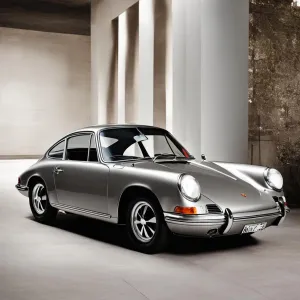 ting the open road is an experience like no other. You’ll feel connected to every mile of pavement rolling under your tires. An early 911 isn’t just a car, it’s a journey—one well worth taking.
ting the open road is an experience like no other. You’ll feel connected to every mile of pavement rolling under your tires. An early 911 isn’t just a car, it’s a journey—one well worth taking.
Market Value and Availability of Original 1963-1973 Porsches
The original 1963-1973 Porsche 911s have skyrocketed in value over the past decade and have become highly sought after by collectors. If you’re looking to own an iconic piece of Porsche history, be prepared to pay a premium.
Availability
Finding an unrestored, matching-numbers example from this era is like searching for buried treasure. Only around 82,000 Porsche 911s were produced in total for the 1963 to 1973 model years, and many have succumbed to rust or been lost to accidents over time. Well-maintained, lower-mileage survivors are rare and often traded privately between collectors. You may get lucky and spot one at a classic car auction, but they frequently sell for far above market rate.
Prices
Values of the earliest Porsche 911s have increased exponentially. According to Hagerty, a price guide for collectible vehicles, a mint condition 1973 Porsche 911 Carrera RS Touring could sell for over $1 million today. Even a standard 1964 Porsche 911 in excellent condition could easily command $200,000 to $300,000 or more, depending on features and mileage.
Restoration costs are also extremely high for these vintage masterpieces. A full, nut-and-bolt restoration by a reputable Porsche specialist shop can easily exceed $250,000 to $500,000 or more for a top-quality job. The good news is, if restored and maintained properly, these first-generation 911s should hold their value well and continue to be solid investments for Porsche aficionados.
Owning an original 1963 to 1973 Porsche 911 is a dream shared by enthusiasts around the world. If your budget allows and you have the dedication to properly care for one of these motoring icons, you’ll be rewarded with an unparalleled driving experience in a vehicle that shaped Porsche’s identity forever. Start your search, find a trusted Porsche expert to inspect any candidates, and be prepared for your life to be transformed once you’re behind the wheel of this automotive legend!
Original Porsche 911 FAQs – Your Top Questions Answered
So you’re the proud owner of an original 1963-1973 Porsche 911. Congratulations! This iconic sports car is a legend for good reason. No doubt you have some questions about properly maintaining and enjoying your classic ride. Here are the answers to some of the most frequently asked questions from owners like yourself.
How often should I drive it?
It’s best to drive your 911 regularly to keep it in good working order. Aim for at least once a week, even if just for 30 minutes. Driving exercises the engine, transmission, brakes, and other components. Not driving for extended periods can lead to moisture buildup and part deterioration.
What kind of fuel should I use?
Your 911 was designed to run on leaded gasoline, so for the best performance use high-octane unleaded fuel with an octane rating of at least 91. Unleaded fuel burns cleaner and won’t damage the valve seats like leaded fuel. You can also add a lead substitute additive for extra protection.
How do I properly store it?
If storing your 911 for the winter or other extended time, fill the gas tank to prevent moisture buildup, change the oil, inflate the tires to the maximum pressure, wash and wax the car, and consider using a trickle charger to maintain the battery. Store the car on jack stands to avoid flat spots in the tires. Use a breathable car cover and place absorbent packets in the car to control humidity.
What are the common trouble signs I should look for?
Some things to monitor closely on your 911 include:
- Oil leaks from the engine, transmission or brake fluid reservoir. Seal and gasket failure is common in older cars.
- Excessive exhaust smoke, especially white or blue smoke. This can indicate valve seal or piston ring wear.
- Noisy brakes or grinding when braking. The brake pads and rotors may need replacement.
- Loose or sloppy feeling in the steering or gearshift. Bushings and mounts can deteriorate over time.
- Warning lights illuminated on the instrument panel. Have the charging system, oil pressure and other critical systems checked right away.
Staying on top of these potential issues and following a regular maintenance schedule will help keep your iconic Porsche 911 running smoothly for years to come. With some love and care, this automotive legend will continue to provide an unparalleled driving experience.
Conclusion
So there you have it, a chance to experience driving history with the original Porsche 911. While it may lack some modern conveniences, this iconic sports car more than makes up for it in style, handling, and sheer driving pleasure. If you’re lucky enough to get behind the wheel of this automotive legend, take it all in – the throaty engine roar, the precise steering, the vintage interior. A drive in the first generation 911 is a trip back in time you’ll never forget. If you have the means and are searching for a thrilling classic car, look no further than the Porsche that started it all. The original 911 is a timeless machine that begs to be driven.








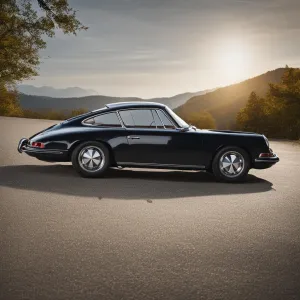
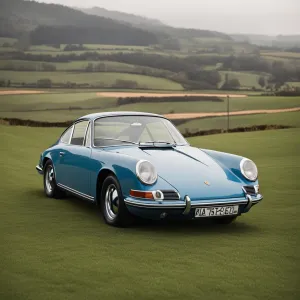

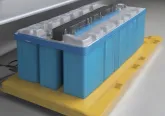
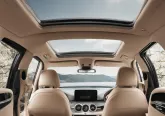
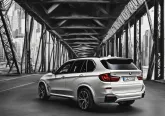
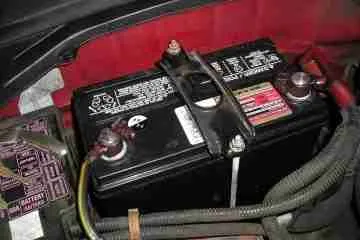

No Comment